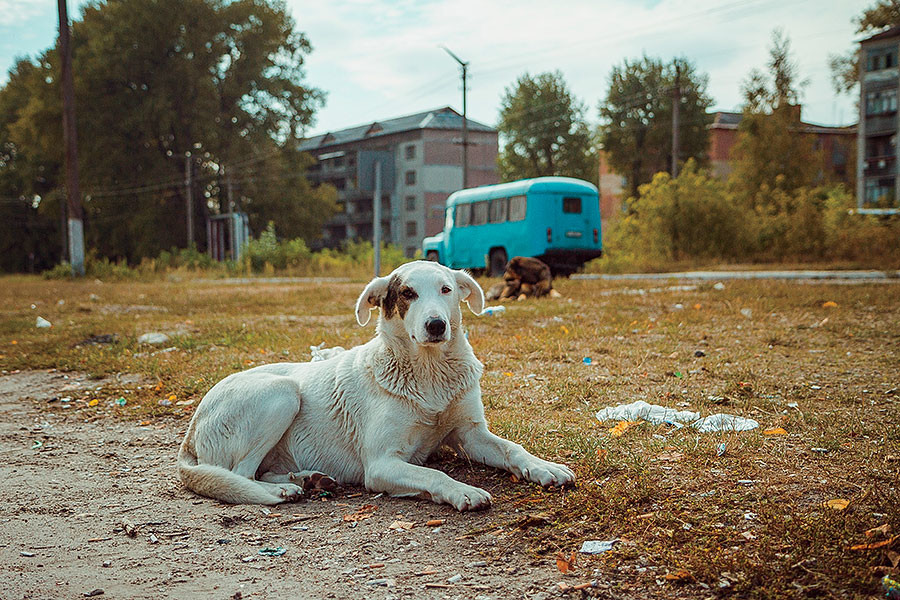Columbia environmental-health scientist Norman J. Kleiman has found that stray dogs thriving at the site of the Chernobyl nuclear disaster in northern Ukraine are genetically distinct from ones in the surrounding area, a discovery that he says could lead to the identification of genes that enable animals, and possibly even humans, to survive long-term exposure to radiation, heavy metals, and other pollutants that still permeate the site.
“Somehow, two small populations of dogs managed to survive in that highly toxic environment,” says Kleiman. “In addition to classifying the population dynamics within these dogs . . . we took the first steps towards understanding how chronic exposure to multiple environmental hazards may have impacted these populations.”
Kleiman hopes that his research will ultimately improve our understanding of the health risks faced by humans involved in disaster-response operations. He notes that thousands of people currently work within the Chernobyl Exclusion Zone on continuing cleanup efforts, as well as at two newly constructed nuclear fuel reprocessing plants, despite still-dangerous radiation levels.
“Examining the genetic and health impacts of these chronic exposures in the dogs will strengthen our broader understanding of how these types of environmental hazards can impact humans and how best to mitigate health risks,” says Kleiman.
Fake plastic employees
Executives at US corporations place so much value on workers’ outward expressions of enthusiasm that they routinely promote people who are passionate yet ineffective, finds Erica Bailey, a doctoral student at Columbia Business School.
Driving under the influence of dementia
People in the early stages of dementia tend to avoid making left-hand turns and frequently slam on their brakes when behind the wheel, according to research led by Columbia engineer Sharon Di. She and her colleagues, who analyzed the driving habits of thousands of Americans using in-car monitoring systems and artificial intelligence, say their work could lead to the development of alert systems that tell drivers when to seek neurological care.
Air pollution accelerates osteoporosis
Older women who live in US cities with poor air quality lose bone mass twice as fast as those in areas with cleaner air, according to Andrea Baccarelli and Diddier Prada of the Mailman School of Public Health.
Cosmic recalculation
An international team of astronomers that includes Columbia’s Zoltán Haiman has discovered that a black hole at the center of the galaxy OJ 287 is much smaller than previously thought — just one hundred million times the mass of our sun, rather than ten billion times. The study has implications for our understanding of blazars, or galaxies powered by supermassive black holes.
Hold on a picosecond
Columbia engineers led by Simon Billinge have invented a camera whose lightning-fast shutter speed — one-trillionth of a second — enables it to document the movements of atoms, which could be crucial for the development of new materials needed for clean-energy solutions.



